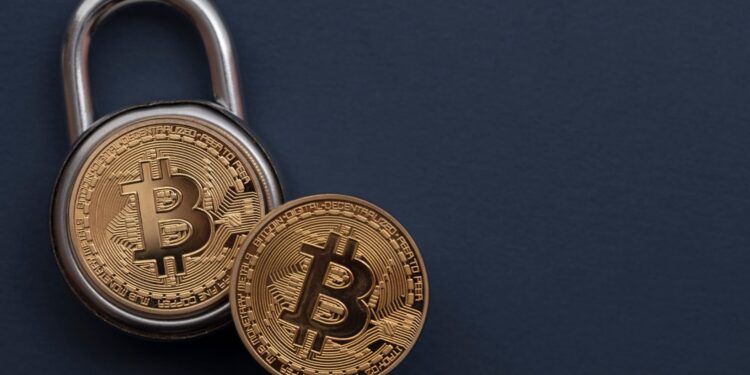In the present era, the term “digital assets” encompasses diverse valuable items stored electronically. Within the context of this discussion, digital assets specifically denote cryptocurrencies – decentralized, digital manifestations of value that have gained recognition for their security and efficiency. The increasing adoption of cryptocurrencies underscores the growing need for robust security measures. Cryptocurrency security extends beyond safeguarding financial holdings to protecting personal and sensitive information. The decentralized nature of cryptocurrencies requires a personalized approach to security. Before delving into best practices, it is crucial to understand the prevalent risks. Threats such as phishing attacks, malware, and social engineering pose significant challenges to the security of digital assets, emphasizing the initial step towards implementing effective security measures. For a better trading experience, use a trusted trading platform and visit https://cryptocomebackpro.co/.
Understanding Cryptocurrency Wallets
Types of Cryptocurrency Wallets
Hardware Wallets
Hardware wallets provide an extra layer of security by storing private keys offline. These physical devices are considered one of the safest options for securing digital assets.
Software Wallets
Software wallets, while convenient, may be more susceptible to online threats. Users must weigh the convenience against the potential security risks when choosing this option.
Paper Wallets
Paper wallets involve printing out the public and private keys on paper. Although they are offline, proper storage and protection are essential to prevent physical damage or loss.
Comparative Analysis of Wallet Security
Examining the strengths and weaknesses of each wallet type helps users make informed decisions based on their specific needs and risk tolerance.
Selecting the Right Wallet for Your Needs
Choosing a wallet involves considering factors such as usability, security features, and the user’s level of technical expertise. Tailoring the choice to individual preferences is key to enhancing security.
Strong Passwords and Two-Factor Authentication (2FA)
Importance of Secure Passwords
Creating a strong, unique password is the first line of defense against unauthorized access. Passwords should be complex and avoid easily guessable information.
Implementing Two-Factor Authentication
Two-factor authentication adds an extra layer of security by requiring a secondary verification method, such as a code sent to a mobile device.

This significantly enhances the overall security posture.
Recommended Practices for Password Management
Consistently updating passwords, refraining from password reuse, and employing password management solutions are effective strategies for maintaining robust password hygiene.
Secure Communication and Online Practices
Encryption Technologies in Cryptocurrency
Understanding encryption protocols is fundamental to secure communication. Utilizing technologies like SSL/TLS ensures that data remains confidential during online transactions.
Avoiding Phishing Attacks
Phishing attacks often disguise malicious intent through seemingly legitimate communication. Learning to identify and avoid phishing attempts is crucial for protecting digital assets.
Safe Browsing Habits for Cryptocurrency Enthusiasts
Adopting safe browsing practices, such as verifying website authenticity and avoiding suspicious links, mitigates the risk of falling victim to online threats.
Cold Storage Solutions
Exploring the Concept of Cold Storage
Cold storage involves keeping private keys entirely offline, protecting them from online threats. This method is particularly effective for the long-term storage of significant digital assets.
Benefits and Risks of Cold Storage
While cold storage provides enhanced security, users must also consider accessibility and potential inconveniences associated with retrieving assets when needed.
Setting Up and Managing Cold Storage for Enhanced Security
Properly setting up and managing a cold storage solution requires careful consideration of user preferences, the frequency of asset access, and risk tolerance.
Regular Software Updates and Patch Management
Significance of Software Updates in Cryptocurrency Security
Regularly updating cryptocurrency wallets, applications, and operating systems is crucial for addressing known vulnerabilities and improving overall security.
Risks of Outdated Software
Failure to update software leaves systems vulnerable to exploitation. Understanding the risks associated with outdated software emphasizes the importance of timely updates.
Establishing a Routine for Software Maintenance
Implementing a routine for software maintenance, including setting up automatic updates and regular checks, ensures ongoing protection against emerging threats.
Social Engineering Awareness
Understanding Social Engineering Attacks
Social engineering involves manipulating individuals into divulging sensitive information.

Recognizing the various tactics employed by cybercriminals is essential for preventing successful attacks.
Recognizing Common Tactics Used by Cybercriminals
Common social engineering tactics include phishing, pretexting, and baiting. Educating users about these tactics enhances their ability to identify and resist manipulation.
Educating Yourself and Your Network to Mitigate Social Engineering Risks
Promoting awareness and education within personal and professional networks builds a collective defense against social engineering threats, contributing to a more secure crypto community.
Emergency Preparedness and Recovery
Creating a Cryptocurrency Emergency Plan
Developing a comprehensive emergency plan involves outlining steps to take in the event of a security breach or unexpected loss of access to digital assets.
Importance of Backing Up Private Keys
Regularly backing up private keys ensures that, in the event of device loss or failure, users can recover their assets without irreparable loss.
Recovery Procedures in Case of Security Breaches
Understanding the steps to recover from a security breach is critical. Timely and decisive action can mitigate the impact of an incident and prevent further compromise.
Conclusion
In conclusion, it is essential to recap the key practices discussed, emphasizing their significance in preserving the security of digital assets. Recognizing that security is a continual process, not a singular task, underscores the need for users to stay vigilant and adaptable to evolving threats within the crypto space. Encouraging a proactive approach to safeguarding digital assets empowers individuals to assert control over their protection, contributing to cultivating a more secure and resilient cryptocurrency ecosystem.
















